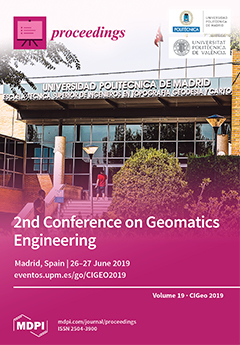Proceedings, 2019, CIGeo 2019
The II Geomatics Engineering Conference
Madrid, Spain | 26–27 June 2019
Volume Editors:
María Belén Benito Oterino, Universidad Politécnica de Madrid, Spain
Mercedes Farjas Abadía, Universidad Politécnica de Madrid, Spain
Miguel-Ángel Manso-Callejo, Universidad Politécnica de Madrid, Spain
- Issues are regarded as officially published after their release is announced to the table of contents alert mailing list.
- You may sign up for e-mail alerts to receive table of contents of newly released issues.
- PDF is the official format for papers published in both, html and pdf forms. To view the papers in pdf format, click on the "PDF Full-text" link, and use the free Adobe Reader to open them.



